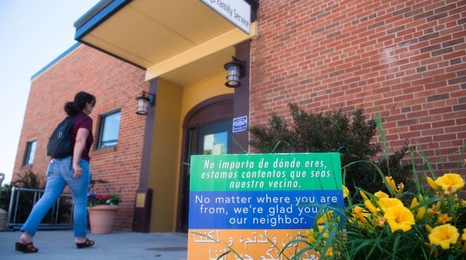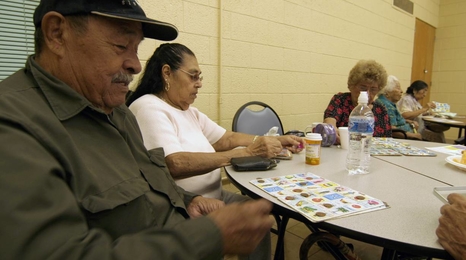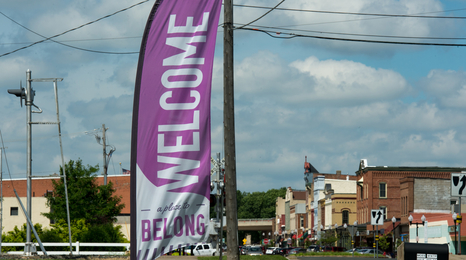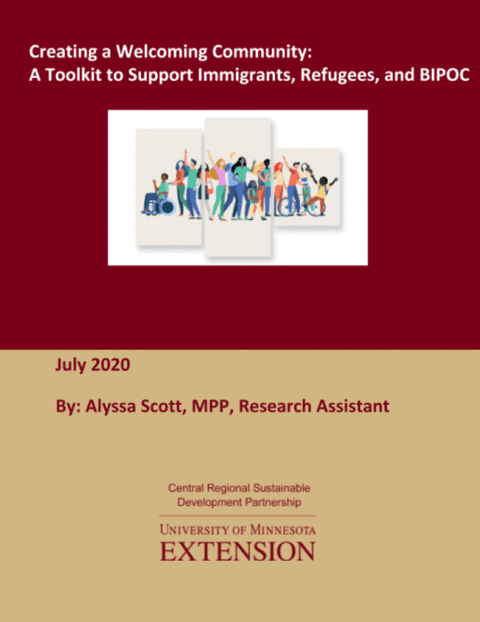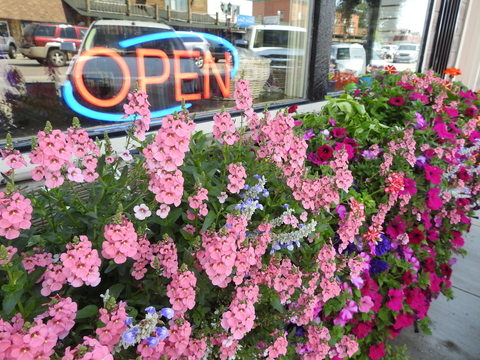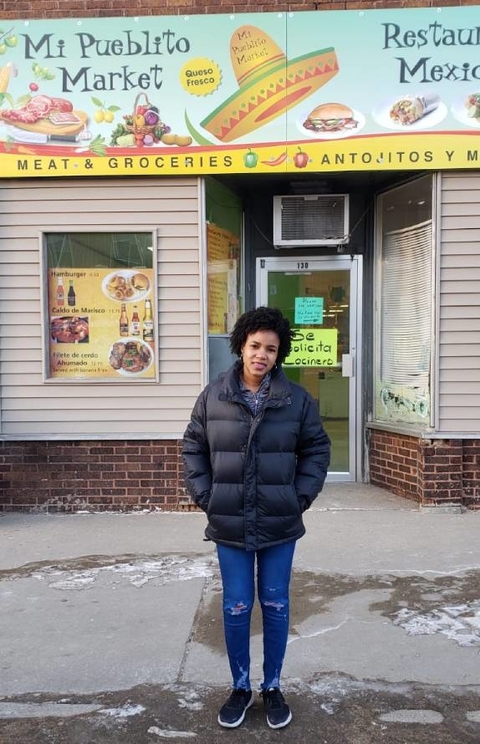The Creating a Welcoming Community toolkit helps towns in Greater Minnesota meaningfully create more welcoming and inclusive communities.
How can community members across Greater Minnesota work collectively to ensure their towns are welcoming to all residents, regardless of their race, ethnicity, language or other characteristics?
Creating a Welcoming Community: A Toolkit to Support Immigrants, Refugees and BIPOC is a new resource to help towns across Minnesota meaningfully engage with immigrants, refugees and Black, Indigenous and people of color (BIPOC) in ways that are welcoming and inclusive.
Supported by the University of Minnesota (UMN) Extension Central Regional Sustainable Development Partnership (Central RSDP) and an Extension small grant, this new toolkit shares guidance and approaches for doing this work in a community-based way, drawing on examples from engagements in Pelican Rapids and Long Prairie.
“Our vision was always to create a resource for people who are thinking about making their community more welcoming. We didn’t necessarily know what that would look like when we started or how it would come together, but we built it collaboratively as we went,” said Alyssa Scott, a current graduate student in the UMN School of Public Health and recent graduate of the Humphrey School of Public Affairs, who initiated the work as part of an internship that grew into a larger collaboration over the course of the past year.
Scott worked with numerous key partners on the project including the UMN Morris Center for Small Towns, Region Five Development Commission, community members and organizations in Pelican Rapids and Long Prairie, Long Prairie Grey Eagle Public Schools, UMN Extension Center for Community Vitality, and The Welcome Place.
Molly Zins, Executive Director of the Central RSDP, advised Scott and helped connect partners and resources for the work. According to Zins, the project’s collaborative, community-based approach was instrumental in navigating both challenges and successes that accompany equity, diversity and inclusion work.
“The work aligned so perfectly with community experiences that we were hearing about and with priorities in our region. So, we explored and connected with existing partnerships and interested communities. A lot of nice connections fell into place,” said Zins. “We walked alongside community partners, listening to their knowledge about who makes up their community and what is needed for them to feel welcome.”
Navigating changing communities
As communities grow and change across Minnesota, such changes can be challenging to navigate for established and new residents alike. Maintaining a welcoming, inclusive and open atmosphere during this process can help.
“It can be really tricky how we navigate change in our communities over time. I think an approach that focuses on strengths is really important and can be a positive force in that process—being curious and trying to be open. You’d have to be open to change to see this toolkit and find ways to use it,” said Scott.
Carmen Urbina Oberton, who works at Long Prairie Gray Eagle Public Schools as both an English as a Second Language (ESL) bilingual assistant and an English co-teaching assistant in Adult Basic Education, was involved as a core partner on the project, assisting with translation and facilitation during the engagement process and reviewing the toolkit publication. She and the students with whom she works have observed how important openness and inclusivity are in the broader community.
“Students in our Adult Basic Education class were really happy that groups like RSDP showed interest in the Hispanic community and the issues these residents face, especially how they may have struggled when they first moved here to Long Prairie,” said Urbina Oberton. “Being able to share their struggles, as well as their perspective on the spaces where they feel welcome, I think that helps people feel even more welcome and supported as part of the community.”
Pictures worth a thousand words
The Welcoming Communities project used a participatory engagement approach called Photovoice to build a shared understanding among participants.
In Long Prairie, Photovoice helped make the abstract concept of inclusion more tangible to community members in their ESL Adult Basic Education classroom. Participants took photos in their community and then came together to share stories behind the photos, what the photos meant to them in terms of feeling welcome, and how the photos and dialogue could inspire action to create a more inclusive community.
“This approach draws on the power of the stories that participants would tell about their experiences,” explained Scott.
According to Scott, having a photo to help tell their story encouraged participants to open up and share in new ways and with greater depth. It is a process that is about much more than just the photos.
“The beauty of the photo in this process ends up being so much about the words and the reasons behind taking it and sharing it. If you’re having a group discussion, if you have a thing to talk about, you talk in depth and in different ways than if you are just asked an open-ended question. Things I never thought to ask came up in those conversations,” said Scott.
Moving forward
The toolkit acknowledges that “being a welcoming community is not an end goal, it requires ongoing work.” Scott and the project team hope communities use this toolkit to inspire new and continued community efforts to create welcoming, inclusive spaces for immigrants, refugees and BIPOC across the state.
As others experiment with this approach, Scott and Zins recommend meeting new community members, immigrants, refugees and BIPOC in the context of safe community spaces with existing groups and infrastructure, recognizing this may look different during the COVID-19 pandemic. Meeting residents where they are removes additional barriers and burdens participants may otherwise face.
“If you work with a group that’s already convening, it’s a natural fit. It’s more meaningful for participants, it helps build trust, and it’s logistically easier to coordinate,” said Scott.
This fall, RSDP executive directors across all five regions are sharing the toolkit with work groups and at board meetings for discussion. These groups will explore ways to build upon the ideas and approaches it outlines in more communities, whether by organizing future trainings or strengthening connections across partners, neighbors and community leaders committed to this work.
“Our boards are the backbone of what we do. They’ll bring a wealth of insights and connections, ways of thinking about how to deploy this tool in different communities and what others have been doing when it comes to inclusion. These conversations will be instrumental in identifying connections and resources to understand how we share this work or build from it,” Zins said.
According to Scott and Urbina Oberton, key measures of success as this work continues will be how well community members from diverse backgrounds can truly listen to one another, build trust and reach an understanding of our common humanity.
“We’re all just humans. We’re made the same and with the same material. So, I hope that this project and all the work we do has that impact of reaching a shared understanding, and we can create a better place for all of us,” said Urbina Oberton.
Interested in sharing your thoughts with RSDP executive directors on how to build welcoming communities in Greater Minnesota? We invite you to share comments or questions about this toolkit or related work in your community via this online form.


